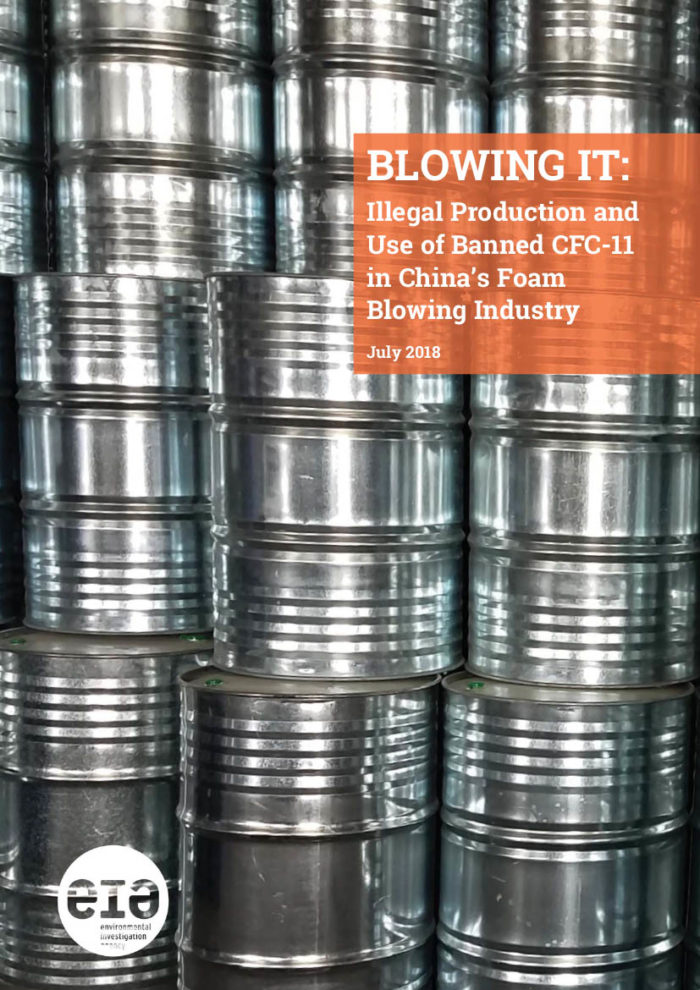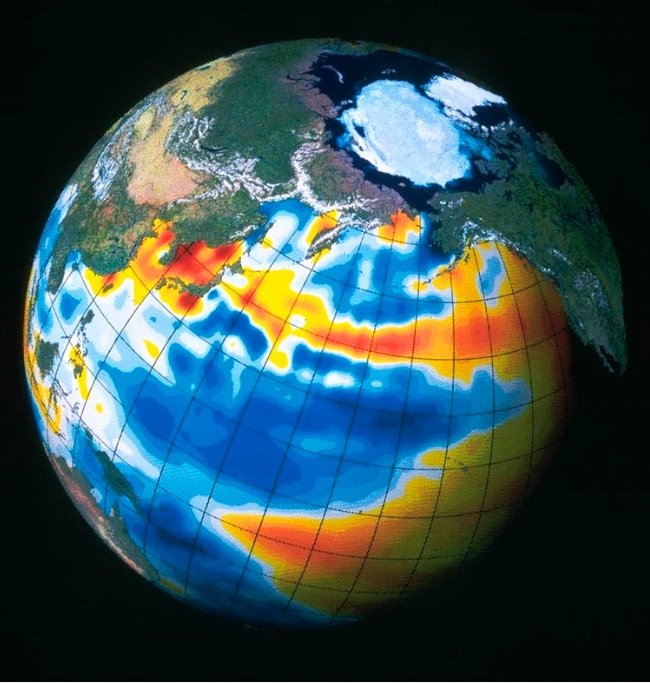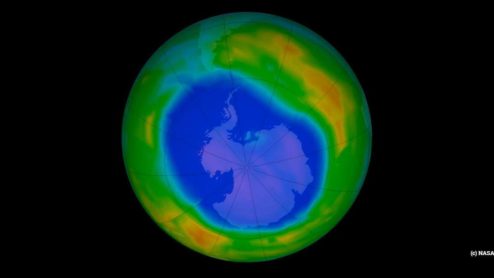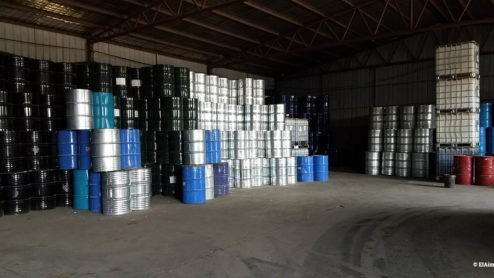China’s first prosecution for rogue ozone-killer gases – but much more needs to be done
For the first time, China has prosecuted a company for the illegal use of a dangerous ozone-depleting gas in its products, with one employee handed a 10-month jail sentence and 50,000 yuan ($7,000) fine for environmental pollution.
Minghe Insulation Materials was found to have used 850 tonnes of CFC-11 over a three-year period to make polyethers, a material often used in car bumpers.
Earlier this month, the company was fined 700,000 yuan ($100,000) and a further 1.4 million yuan ($200,000) in company profits were confiscated.
CFC-11 is a potent greenhouse gas that causes serious damage to the ozone layer and contributes to climate change. CFC-11 should have been phased out by 2010, alongside all other CFCs globally, under the Montreal Protocol. However, in 2018, scientists discovered unexpected emissions of CFC-11 in the atmosphere, equating to roughly 40,000-70,000 tonnes of illegal CFC-11 being produced a year.
These emissions, if not halted immediately, could put the recovery of the ozone layer at risk of severe delay.
EIA investigated and found widespread and ongoing CFC-11 production for use in foams for insulation in China. Our undercover investigators found 18 different companies in 10 Chinese provinces using CFC-11, highlighting the pervasiveness of the practice.
Since EIA exposed this scandal in our Blowing It report, the Montreal Protocol called for urgent action and vigilance on the illegal manufacture and trade of CFC-11. China has stated a ‘zero tolerance’ approach and carried out nationwide enforcement actions to crackdown on illegal production and use of CFC-11. This case is the first criminal proceeding arising from these efforts.
Climate Campaigner Sophie Geoghegan said: “EIA recognises China’s actions but, given the scale and severity of the issue, more needs to be done.
 “The illegal CFC-11 production sites discovered by Chinese authorities so far could not account for the estimated level of CFC-11 production and the country should continue and enhance their enforcement actions through an intelligence-led effort.”
“The illegal CFC-11 production sites discovered by Chinese authorities so far could not account for the estimated level of CFC-11 production and the country should continue and enhance their enforcement actions through an intelligence-led effort.”
The Montreal Protocol needs to ensure this cannot happen again. Firstly, these emissions must be halted immediately or the ozone successes secured to date could be undone.
Current scientific calculations show the ozone hole will have mostly disappeared by 2065, thanks to the Montreal Protocol. However, these emissions will undoubtedly delay this recovery date. Scientists found that the delay could be curtailed to a few years with immediate action to completely halt the rogue emissions.
However, without action the recovery of the ozone layer could be delayed by as much as 18 years. The Montreal Protocol needs to examine how and why this illegal CFC-11 was being manufactured without detection – there are still numerous knowledge gaps that need to be addressed.
Secondly, and more fundamentally, EIA urges a comprehensive review of the Montreal Protocol’s monitoring and enforcement regime to ensure its effectiveness in combating the illegal trade of potent fluorinated gases. The Montreal Protocol’s institutions must also be ready for the new challenges of the HFC phase-down under the Kigali Amendment.
The Montreal Protocol is hailed as the world’s greatest environmental treaty and must now work to ensure it can retain that title.




